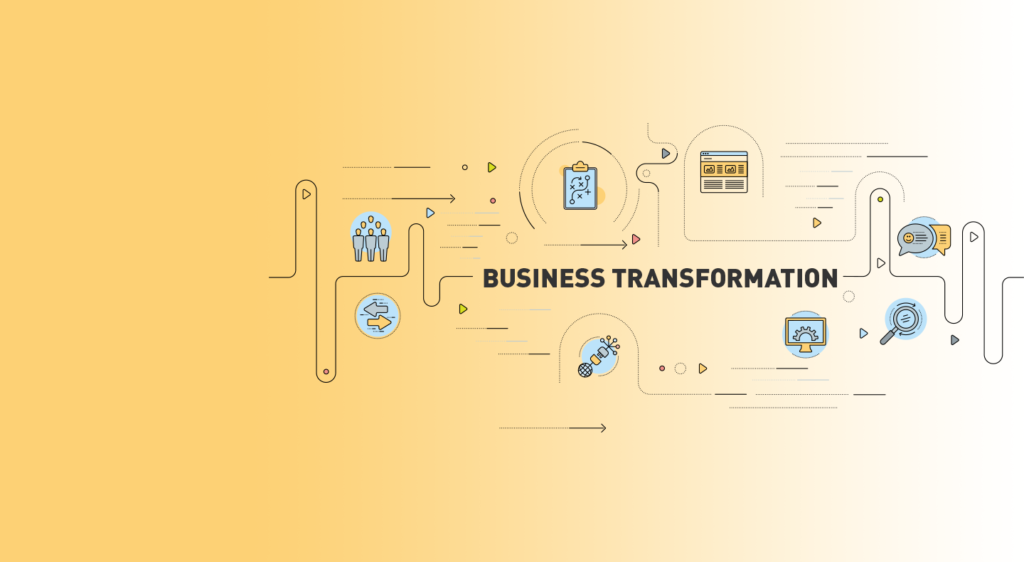An abrupt speed of change is ever-changing our businesses and the entire economy.
As an agility and innovation management consultant at Astrakhan, I have been lately sharp-eyed to key principles behind business transformation, which I have a firm belief that it became the ultimate solution to respond to any change. Organizations are daily confronted with the need to cope with market fluctuations and bring new solutions, in a way to meet a true potential growth and perform efficiently. Unfortunately, in some cases, even though the project was too ambitious in the first place, the complexity of transformation projects has a significant impact on both managing efforts to sufficiently execute plans and the ability to adapt to the speed of change.
For the time being, concerns over business transformation are gaining in popularity throughout the world.
Transformation is evidently defined as any shift, realignment or fundamental change within a company, covering the integration of new solutions, whichever engage into radical adjustment at different levels, including processes, systems and technologies, as long as it’s also coupled with the transformation at a behavioral level, the new roles or skills required to match the shift in the components of the work environment.
As far as companies are seeking to offer personalized services and products to meet their client’s expectations and satisfaction, they also express the need to find personalized solutions that fit well with their way of functioning. The thing is that after recognizing the need to change, it’s quite easy to come up with an idea, but still hard to implement it.
Moreover, any transformation within a company is determined by the context and nature of some socioeconomic factors impacting the overall activity and performance of a company. In other words, it seems important to mention that some transformation should be proper to the need of an organization, it’s a solution designed to address a specific problem that incorporates new innovations, herein lies our role, at Astrakhan we design and deliver customized solutions to our clients, any conceived project has its own methodology and unique concepts to match both needs and ambitions. In view of this, lies our role as the actor of change, a role essential to manage the complexity of business transformation efforts.
Then, within a business context, innovation is that fascinating term to which we became more exposed and progressively brought into companies’ working state and culture at an unexpected large scale, and that’s regardless of hierarchies and sectors. Shall simply say that innovation is widely defined as the creation of something new, to bring to life new ideas, methods, or devices, anything that could be judged as doing things differently.
At the age of digital revolution and continuous innovation development, organizations need to perform under some external factors that require smart moves and adoption of revolutionary strategies in order to perform and flourish genuinely. In some cases, innovate became crucial to maintain the activity of a business, to accelerate its process and to continually empower its employees and improve their productivity.
Agile, that must be the newly concept and most used word within organizations, a state-of-the-art approach to ever changing our ways of working, but also our way of thinking.
Let’s first understand what agile stands for: “it’s simply characterized by quickness, lightness, and ease of movement”. Then, when it comes to agile development within the workplace, it’s an empowering process that helps teams to effectively collaborate and run projects through iterations in order to create highly valuable products and gain a strong competitive edge.

What is more, aside from having improved business processes, agile is withal a great improvement initiative to improve employee’s mindset, it’s a powerful mean that encourages collaborative work and push for more creativity; developing such an agile mindset helps in establishing a sustainable workplace and equips people to react actively to any kind of changes.
Today, agile methodology is widely considered as a key success to business transformation, we express the urge to implement agile at large scales and to be able to respond to rapid changes, along with gaining control and staying nimble at the same time. Keeping in mind that a misemployment of agility may lead to an important gap between “being agile” and “doing agile”. An agile enterprise is capable of rapid response to unexpected changes, built in order to facilitate processes and ways of achieving development objectives. Indeed, different approaches of agility are widely used by companies, as illustrated below, to move from a traditional and hierarchical structure to a more agile and flat one requires a change at different levels, but those who are doing agile are just following specific frameworks, practices and techniques, which indicates that an enterprise has failed to move beyond the simple trappings of agility.
In other words, performing iterations, employing agile methods and practices doesn’t mean that an enterprise is agile.

In essence, it goes without saying that agility and innovation constitute today a real value proposition that benefit corporations not only to transform their core businesses, but also to be able to respond to the abrupt speed of change.
